
Main ingredients:
White quinoa: 50g; Water: 150g; High-gluten flour: 300g; Milk: 180g; Mixed nuts: 80g; Raisins: 40g.
Auxiliary materials:
Salt: 3g; High-activity dry yeast: 2.7g; Water: 15g.
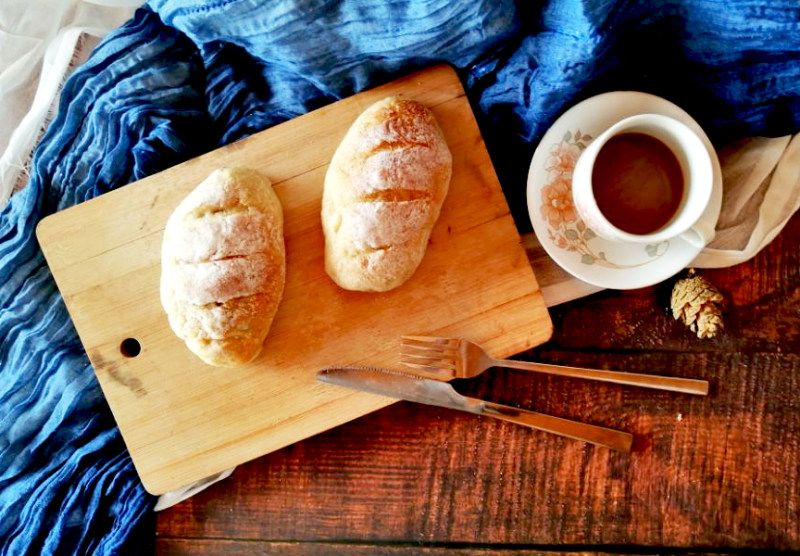
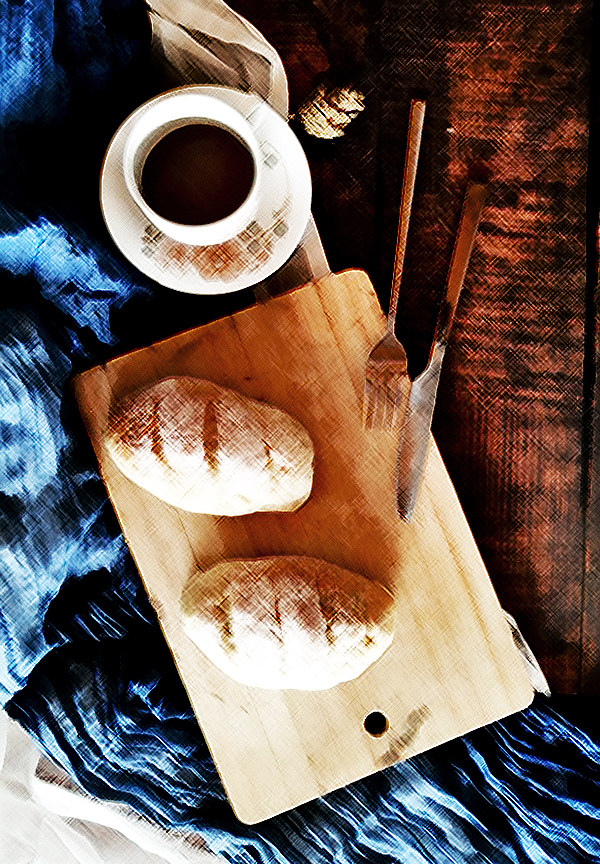
Taste: Sweet; Process: Baking; Time: Several hours; Difficulty: Advanced.
Steps to make Quinoa Fruit and Nut European Bread

①-② Pour 50g of white quinoa into a pot, add 150g of water, and cook until thickened as shown in Figure ②. ③-④ Sift 300g of high-gluten flour and pour it into the bread machine mixing bucket. Add the quinoa porridge, 180g of milk, and 3g of salt. Stir with a scraper to form a fluffy texture. Run the dough program for 20 minutes, cover with plastic wrap or a damp cloth, and refrigerate for more than 30 minutes. Do not add yeast in this step to prevent the dough from fermenting when refrigerated and hydrated.
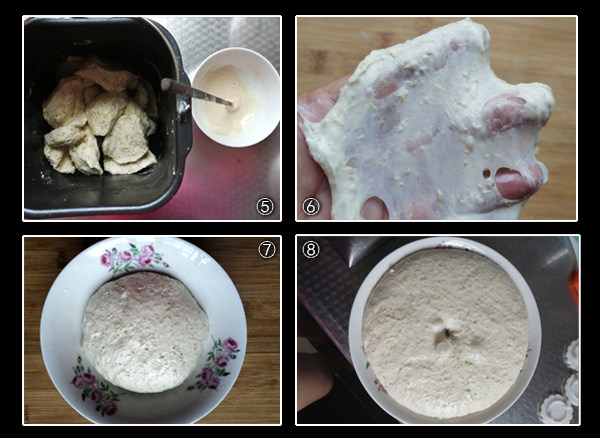
⑤ Dissolve 15g of yeast in water (let it sit for 5 minutes to activate). Take out the dough from the refrigerator and cut it into small pieces. Put the dough and yeast solution into the bread machine and run the dough program for another 20 minutes. Be careful not to over-knead the dough this time. ⑥ I over-kneaded the dough a bit until it could be stretched into a transparent film with smooth edges. ⑦ Put the dough in a large bowl greased with oil (to prevent sticking), cover it with a large plastic bag, and let it ferment at room temperature (28℃). ⑧ When it has doubled in size, poke a hole with your finger dipped in dry flour. The hole should not bounce back or collapse.
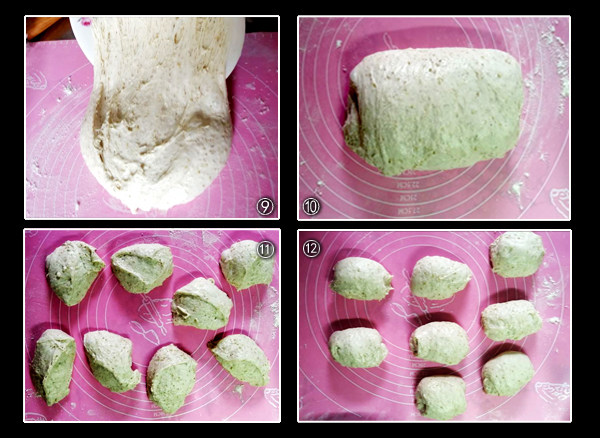
⑨ Use a scraper to help pour the dough onto the cutting board. ⑩ Dip your fingers in water, gently pull one end of the dough, stretch it out, fold one-third back, stretch the other end, and fold it back on top to form a three-fold. Then fold it in the other direction to form another three-fold (i.e., fold it left and right first, and then up and down, because the dough is moist, and your fingers are wet to prevent sticking). Cover it with a plastic bag and let it rest for 20 minutes. Try not to touch the dough with the plastic bag. ⑪ Divide the dough into equal parts. I divided it into 8 pieces. ⑫ Fold each piece of dough left and right three times and then up and down three times, just like the big dough. Cover it with a plastic bag and let it rest for 20 minutes.
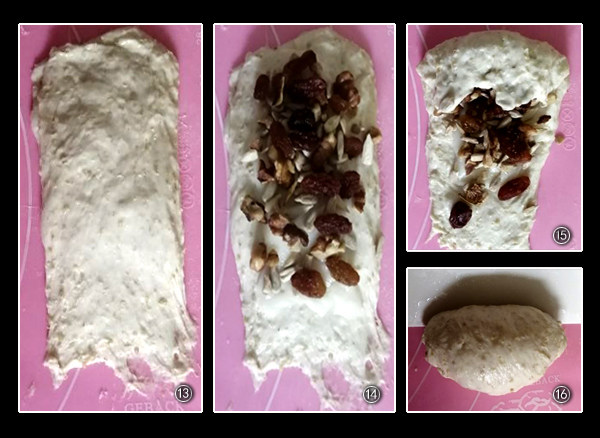
⑬ Dip your fingers in water, pick up one end of the dough, stretch it out, press the thin end on the cutting board, shape the other end into a rectangular shape, and use your hand to pat it to remove large air bubbles. ⑭ Sprinkle nuts and raisins on the dough, but do not sprinkle them on the thin end. ⑮ Roll it up from the top to the bottom, not too tight. If it sticks to your hands, moisten them with water. ⑯ When it is rolled up, use a scraper to lift the rolled dough.

⑰ Put it in a non-stick baking pan. After all the dough is made, cover it with a plastic bag. Since the room temperature is high in summer, it can be fermented at room temperature. ⑱ When it has doubled in size, poke a small hole in the side of the dough with your finger dipped in dry flour. It should slowly bounce back. This means it is ready. ⑲ Spray the surface of the dough with water mist, sift a layer of dry flour (not included in the recipe), and make a cut with a sharp blade. I used a razor blade. ⑳ Preheat the oven to 230℃ and put an empty baking pan in it. Pour a bowl of water into the empty baking pan and immediately close the oven door. Bake for about 30 minutes, paying attention to the color. Cover it with aluminum foil if it is too brown. It is done when it emits a strong bread aroma. The surface of the freshly baked bread is crispy and hard, but it will become soft after being cooled and sealed overnight.
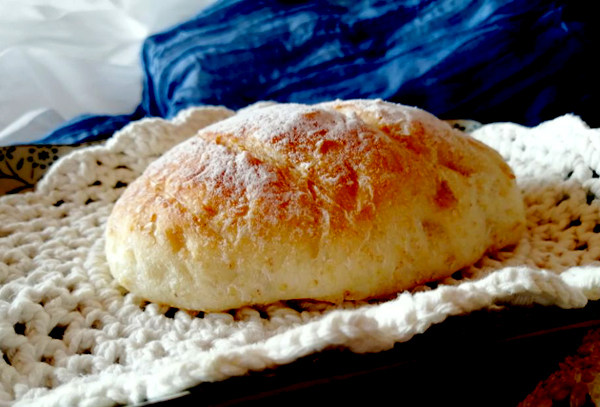
The fragrant bread is ready!
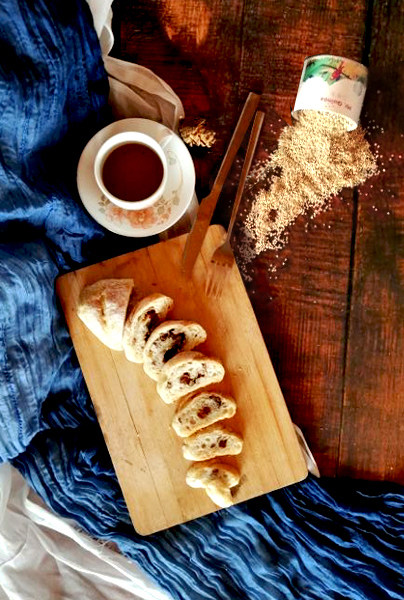
It has a crispy exterior and a soft and chewy interior. It is sweet and fragrant, and you don’t have to worry about gaining weight whether you have it for breakfast or afternoon tea!



Leave a Reply